Back in October 2011 we decided to install our Wildflower Roof Turf on one of our containers here at the farm.
It was a really simple process… first we installed a couple of wooden posts inside the container, to provide additional structural strength and support. Secondly a waterproof membrane was placed on top of the container.
Drainage was a consideration because you do not want pools of water to sit on the roof. The container already had a slight pitch which was sufficient. Providing good drainage will also help to keep the grasses in check, because they favour wetter conditions, whereas the wildflowers prefer drier conditions.
The Wildflower Roof Turf was easy to install, here is how we did it…
Directly on top of the waterproof membrane we installed substrate sacks. These are easy to manage and contain an inert, ph modified, low nutrient compost based growing medium, perfect for the Wildflower Turf to bed into.
Once the sacks have been installed it is at this point, that in most instances screeding is carried out, which involves applying a thin layer of loose substrate over the top of the sacks.
The advantage of screeding: it fills the gaps between the sacks, leveling the substrate layer whilst creating a neater, smoother surface for the turf to be laid onto. However we decided for this project, screeding was not necessary. Because we did not apply screeding we overlapped the substrate sacks by about 100mm.
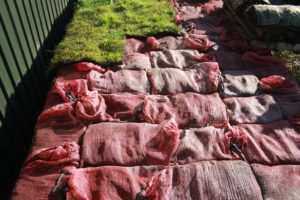
Next we needed to get the turf onto the roof…to make it easier we used a JCB to hold the pallet of turf to the right height to allow the rolls of turf to be taken off one by one. This saved time and energy and was also safer, because the rolls did not need to be carried up the ladder to the roof.
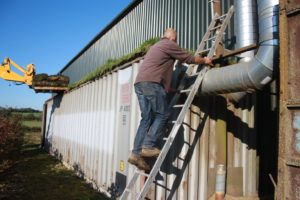
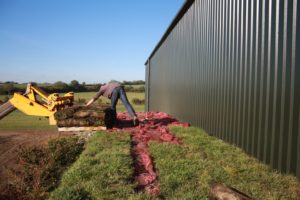
The next step is to lay the turf in neat rows, making sure that you do not overlap the edges, but rather butt the edges up tightly, like the illustration below demonstrates.


Because we wanted to overhang the turf slightly around the edge of the container, we started laying the turf from the outside and worked inwards. We also laid the turf in sections, to avoid walking on it constantly. Although the Turf is very robust it is advisable to try to keep the foot traffic to a minimum.
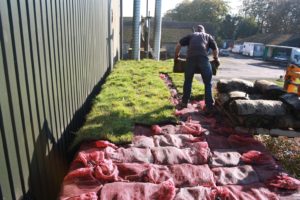
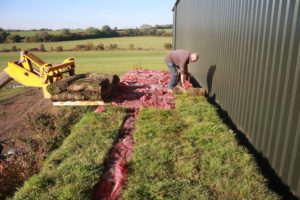
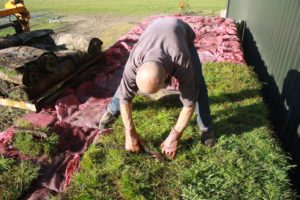
Sometimes it will be necessary to trim the turf, which can be easily done by using a sharp knife.
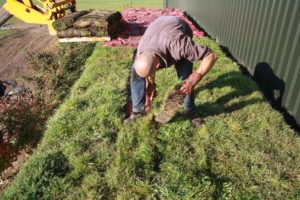
The completed green roof… this one simple change has made the container not only more aesthetically pleasing, but also a suitable habitat for wildlife passing through. It will help make a welcome retreat for species migrating from one habitat to another by providing both food and shelter.
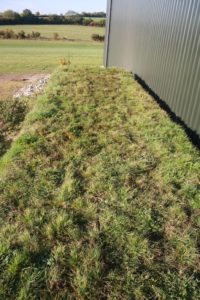
If you have any questions about how to establish a green roof give us a call, we would be happy to discuss your project with you.